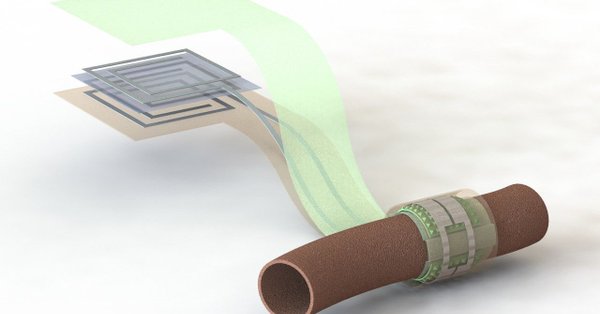Biodegradable sensor can monitor blood flow in arteries

Stanford scientists have developed a biodegradable, battery-free sensor that can monitor the flow of blood through an artery, helping doctors assess the success of blood vessel surgery.
The device does not need to be removed and can warn a patient's doctor if there is a blockage, researchers said.
"Measurement of blood flow is critical in many medical specialties, so a wireless biodegradable sensor could impact multiple fields including vascular, transplant, reconstructive and cardiac surgery," said Paige Fox, assistant professor at Stanford University in the US.
"As we attempt to care for patients throughout the Bay Area, Central Valley, California and beyond, this is a technology that will allow us to extend our care without requiring face-to-face visits or tests," said Fox.
Monitoring the success of surgery on blood vessels is challenging as the first sign of trouble often comes too late. By that time, the patient often needs additional surgery that carries risks similar to the original procedure. This new sensor could let doctors keep tabs on a healing vessel from afar, creating opportunities for earlier interventions.
The sensor wraps snugly around the healing vessel, where blood pulsing past pushes on its inner surface. As the shape of that surface changes, it alters the sensor's capacity to store electric charge, which doctors can detect remotely from a device located near the skin but outside the body.
That device solicits a reading by pinging the antenna of the sensor, similar to an ID card scanner. In the future, this device could come in the form of a stick-on patch or be integrated into other technology, like a wearable device or smartphone.
The researchers first tested the sensor in an artificial setting where they pumped air through an artery-sized tube to mimic pulsing blood flow.
Surgeon Yukitoshi Kaizawa, a former postdoctoral scholar at Stanford, also implanted the sensor around an artery in a rat. Even at such a small scale, the sensor successfully reported blood flow to the wireless reader.
The researchers are now finding the best way to affix the sensors to the vessels and refining their sensitivity. They are also looking forward to what other ideas will come as interest grows in this interdisciplinary area.
(This story has not been edited by Devdiscourse staff and is auto-generated from a syndicated feed.)
ALSO READ
Security Council urged to ‘end the bloodshed’ in Gaza
IIT Jodhpur researchers develop sensor to track disease progression, provide rapid medical support
IISc researchers design sustainable hydrogel to remove microplastics from water
Glenmark recalls 6,528 bottles of blood pressure drug in US
Soccer-Sweden's Olsson improving after suffering blood clots in brain










